It takes some time and effort to establish a good working relationship with a small plastic part injection molder. As a result, you may be reluctant to move on to a different provider, even if the current relationship starts to deteriorate.
A number of questions will likely come to mind — things like:
- What are the signs that it’s time to leave?
- What are we risking if we decide to stay?
- If we choose to leave, what is involved in moving our processes to a new injection molding shop?
How to Know It’s Time to Find a New Small Plastic Part Injection Molder
You’ll know it’s time to leave your current injection molder when one or more of the following issues starts to occur:
- The quality of the plastic parts becomes inconsistent or falls below your standards
- The provider starts missing deadlines or asking for extensions on a regular basis
- The molder seems to be avoiding your calls and emails
- You no longer trust the provider to be honest with you and to meet commitments
- You feel compelled to start looking into other options
Taking a “wait and see” approach generally doesn’t pay off in these kinds of situations. Instead, you tend to be much better off in the long run if you take action. What’s at stake if you don’t act? First, there can be financial repercussions if your molder is missing their deadlines and consequently you are missing yours. Second, if you aren’t meeting your timeframe of quality commitments, your reputation in your industry may suffer. And finally, if you are in a competitive market, the sad truth is your rivals will likely use your current struggles against you as they look to land new business.
Considerations for Transferring Tooling to a New Small Plastic Part Injection Molder
As you strive to make a smooth transition from your old provider to a new one, keep in mind that the plastic injection molding shop you’ve chosen can guide you through this process. The switch will involve providing your new small plastic parts injection molder with key items like:
- Molds and number of parts produced with those molds, thus far
- Mold specs
- Drawings and information on materials used
- Detailed information on parts
- Production information, including number of cavities and part weight
- Quality control requirements
- Assembly or packaging requirements
Be sure that your new provider is aware of things like impending deadlines, project frequency, etc. so they can hit the ground running.
What to Expect During the Tooling Transfer
When leaving your previous molder, you can expect that you will be responsible for remnant materials from previous production activity. While this may seem unexpected, it does benefit you and your new plastic injection molder because you will have some materials to jumpstart the transition. You can also expect that your previous molder will require your account to be settled before tooling leaves their facility.
If your issues with the previous molder have been in the quality realm or your tooling has seen a lot of action, your tooling may need some maintenance. A common path to deterioriating relationships: worn or incapable tooling, left unaddressed, leading to quality concerns, vendor corner-cutting, and ultimately customer frustration. You should expect that your new plastic injection molder wants to meet your quality expectations and will need your support.
If your issues with the previous molder have been in the delivery realm, you can and should expect them to jump through hoops for you. If you don't find a sense of urgency and responsiveness across the table, find another vendor!
Taking the Stress Out of Plastic Injection Tooling Transfers
If you choose to move your work to us at AIM Processing, we understand that this can be a stressful time and will do all we can to streamline and simplify the transfer. We’ve helped many companies make the switch quickly and efficiently in our more than two decades in business. If you’d like to learn more about us to help with your decision, we’d love to have a cup of coffee with you or get on the phone to discuss your situation. Contact us at your convenience.

 SINCE 1993 MADE IN USA
SINCE 1993 MADE IN USA 


